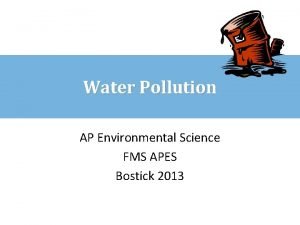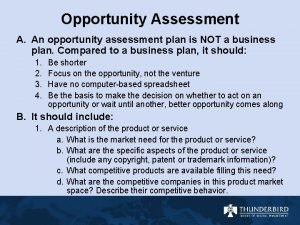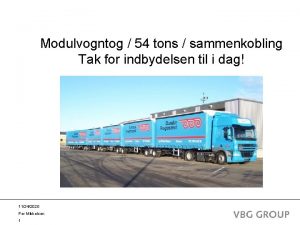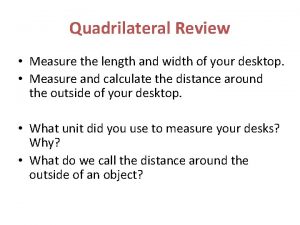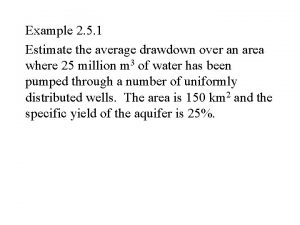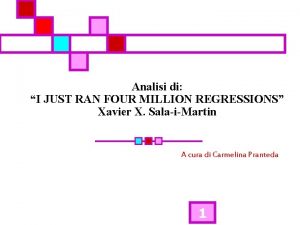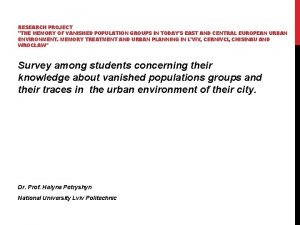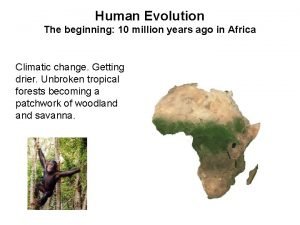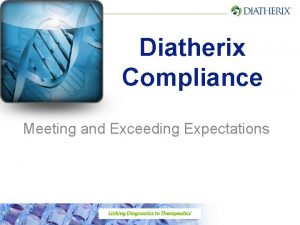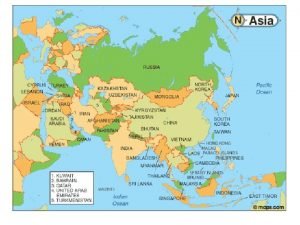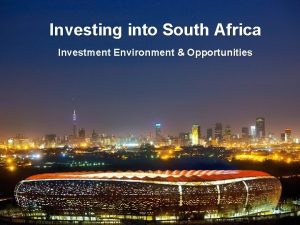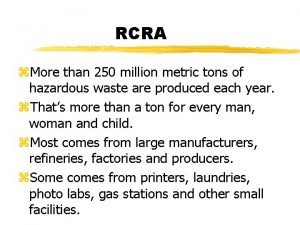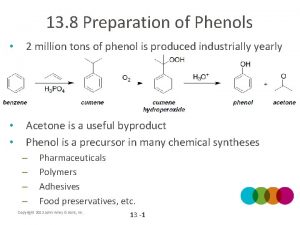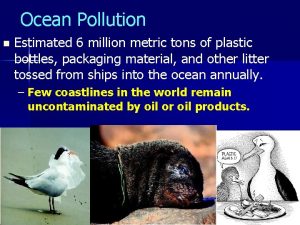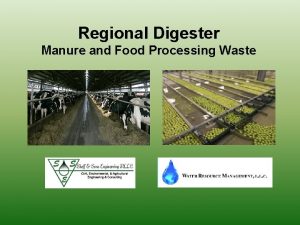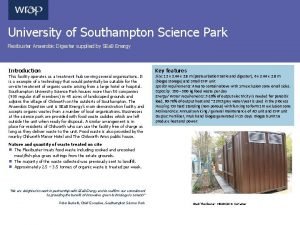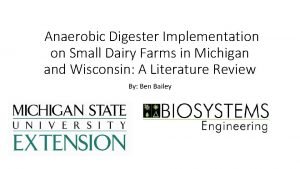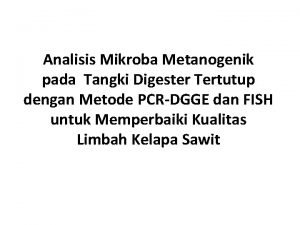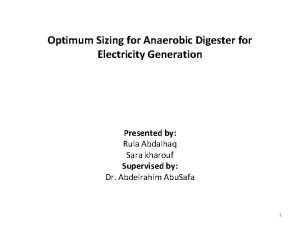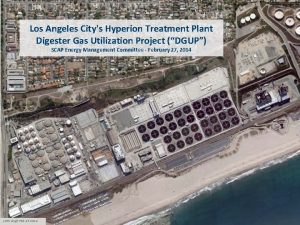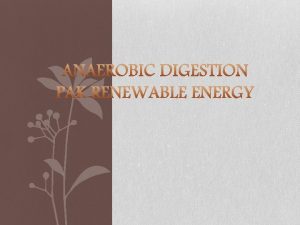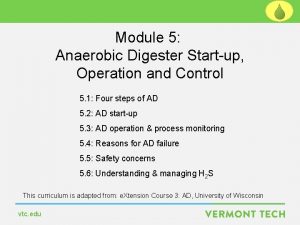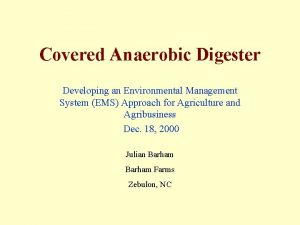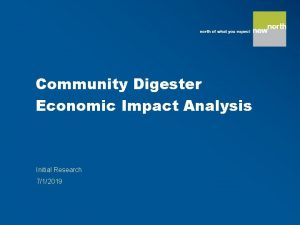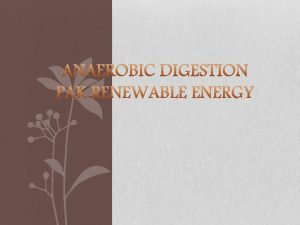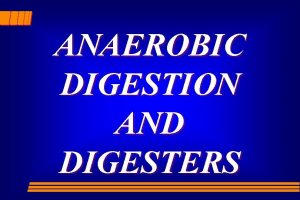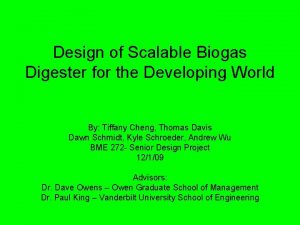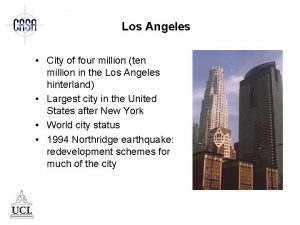Food Digester Opportunity 34 million tons of Food



























- Slides: 27

Food Digester


Opportunity 34 million tons of Food Waste generated in 2009 Less than 3% was recovered and recycled Food Waste is the single largest component, of the remaining waste stream, being disposed of in landfills Landfills serve as the largest source of atmospheric methane in the United States. Methane is 26 times more potent than Co 2 on Green. House Gas. Anaerobic digestion of food waste, once disposed of in a landfill, creates the methane.

Organic Material that has come from a once-living organism; is capable of decay, or the product of decay such as food waste. Food Waste Includes uneaten portions of meals as well as trimmings from food preparation activities in kitchens.

Food Waste - #2 by Volume #1 by Weight

Market Overview These commercial businesses generate 70% of food waste Restaurants Hotels Hospitals Food Stores 28% 16% 13%

Primary function of Bio. Green 360 : Accelerate the natural decomposition process of organic waste through the utilization of advanced proprietary microorganisms while maintaining optimal levels of aeration, moisture and temperature.

Bio. Green 360’s unique microorganisms safely decompose organic waste at an accelerated rate, without soil or groundwater contamination, into a soil amendment that is 10% of its original weight.

Bio. Green 360 Digester Features & Benefits • • • • Easy installation (no need for water supply) Self-contained unit, small footprint Stainless steal cabinet Quiet, clean, cost effective and sanitary Continual feed process Auto Start/Stop when lid Closes/Opens Warning light & alarm when hopper or grinder door is left open Low-cost operation and hassle-free maintenance Fully automated operation Reduced waste disposal costs Increased recycling rates Decreased impact on landfill capacity & greenhouse gas emissions Eliminates odor & pest issues associated with food waste storage

How it Works Totally self-contained, continual feed, organic waste disposal system Biologically converts solid food waste into compostable material Accelerates the natural decomposition process by maintaining optimal levels of aeration, moisture and temperature The Digester quickly decomposes organic waste including: vegetables, fruits, meats, fish, poultry, breads, pastas, solid dairy products as well as bones, shells, rinds, peels and skins

Bio. Green 360 Digester An inside look of the main hopper shows the auger paddles that mix the food waste and the aeration pellets as the micro- organisms breakdown the organic material.

Bio. Green 360 Digester A grinder effectively reduces, bulk items and small bones, into smaller pieces. This creates increased surface area, allowing the microbes to breakdown these items more quickly.

Bio. Green 360 Digester A green visual indicator light shows when the unit is operating. The red light will illuminate if either the hopper or grinder door is left open. The red light also illuminates if the grinder jams or other service is needed.

Bio. Green 360 Digester A look inside an operating digester shows the microbial impact on the food waste. The food waste is subject to temperatures exceeding 280 degrees. Fahrenheit, effectively killing all pathogens, bacteria and even seeds. From first input of organics to the start of compostable material discharge takes approximately 3. 5 hours.

Bio. Green 360 Digester The enzyme enhanced microbial technology is classified as BIO Safety Level 1 (determined safe for human and animal contact). The end product has been reduced by 90% and can be considered a bio -sterile mass. It is 95% dry and can be stored for several months.

Customer Value Proposition Waste Diversion: Reduces current disposal cost of food waste by 90% creating a significant quantifiable economic benefit Transportation: eliminates associated transportation cost by reducing volume at the generator GHG Impact: Reduces fossil fuel emissions through reduced fuel consumption Reduces methane emissions at landfills and compost facilities by eliminating the basic supply source – FOOD WASTE Sustainability Goals: Allows customers to increase overall recycling. Regulations: Assists business in complying with NEW and Proposed food waste diversion regulations

What Makes This a Better Choice Bio. Green 360 Digester – Does not consume any fresh water or discharge grey water – No plumbing required – No TSS (Total Suspended solids) issue – No regulatory issues – Only requires once a year reseeding of microorganisms – – – Liquid Based Digesters Consumes 150 to 500 gallons of fresh water per day and discharges 225 to 750 gallons of grey water Required plumbing adds $7, 000 $10, 000 to installation costs Possible TSS issue as a result of dirty or grey water discharge Local regulations often prohibit grey water discharge into the sanitary water system Need to be reseeded with microorganisms every 2 -3 months

What Makes This a Better Choice Bio. Green 360 Digester Dehydrating Digester – You are able to load throughout the day without restrictions – Must be batch loaded -restricted from being fed throughout the day – Automatic discharge of solid final product – Does not automatically discharge and requires manual discharge of solid final product – No rehydration issues with fungus, bacteria or odor – Upon rehydration may produce fungus, bacteria and odor

Bio. Green 360 Digester Models Available BG 500 BG 1000 and BG 1500 (Includes Grinder)

Frequently Asked Questions

Digester FAQs Q. How do I know if my product is safe for soil application? A. Based on standard food material input, the by-product has a slight acidic PH so we recommend you mix it with other compostable material before adding it to your lawn or garden. If you feel it necessary, a soil analysis will determine whether or not one will help the other. The end product will vary from site to site depending on what goes into it, so this step is important to maintaining a healthy soil. Q. If I use the soil amendment in my garden, will seeds from what was processed grow? A. No, during the cycle, the waste is heated to 280 or more for several hours, killing all bacteria and plant seeds in the process.

Digester FAQs Q. Are the units mobile? A. All units have casters for easy mobility. Q. How should I use my end product? A. The end product can be used on the grounds of your establishment, sent to a composting facility. Because the end product is 95% dry, it is stable and can be stored for months, when not exposed to rain or snow, with no ill effects. Q. My end product seems a bit wet; what should I do? A. You may have overwhelmed the unit by putting a large amount of liquid into the hopper. Bio. Green 360 is not designed for processing of liquid waste. If this occurs, it will require a normal cycle for all liquid to be evaporated and the unit to generate a normal by-product.

Digester FAQs Q. Should I expect some sort of odor? A. Bio. Green 360 is a low-odor device. It effectively manages odor through activated charcoal air filters and a plasma deodorizer. It may emit a slight cooking odor at times, but it is unlikely that you will find it offensive. Q. How simple is the unit to operate? A. Easy as 1, 2, 3. Open the main hopper door, dump in the waste, close the door and walk away - that simple Q. What is the difference between Bio. Green 360 and other units on the market? A. Bio. Green 360 consumes no fresh water and does not discharge any dirty water into sewer system. The only discharge from the unit is the sterile biomass and small amounts of condensate runoff from the condenser unit, which is safe to pour down the drain.

Digester FAQs Q. What type of material can go into a Bio. Green 360? A. If it is from nature and fit for human consumption, your Bio. Green 360 will love it. Q. I work in a high-volume restaurant. Sometimes things get missed when sorting; will it hurt the machine? A. Making sure that silverware does not enter the machine is a must. Even a random piece here or there might damage the unit. Make sure that all inorganic materials are removed from wastes before loaded into the unit Q. How should I install a unit? A. Bio. Green 360 can provide installation thru our service provider network

Digester FAQs Q. How often should the inside of the unit be cleaned? A. Typically there is no cleaning of the inner tank. Periodic buildup on the auger may need to be removed by a service technician Q. Really, how full can I fill the unit? A. The fill should not exceed the auger blade height of the unit. Q. My employees like to open the door on the unit during processing to see what’s going on is there anything wrong with doing this? A. No, however you will delay the process time for cycling the waste. When the door is opened for loading the unit stops. If the door is left open or opened unnecessarily, the unit is not running and will take longer to cycle.

Digester FAQs Q. What power requirements do I need? A. Units are 3 phase 220 volt. Please refer to Bio. Green 360 specification sheet. Q. What do the number displays mean and is there something I should be monitoring? A. The number displays are for monitoring temperatures and time. They are pre-set at the factory based on your requirements (waste stream) and should require no additional input. If the numbers on the display exceed the programmed set points, the unit will shut down. Q. How much does it cost to operate Bio. Green 360? A. We estimate an average of $285 a month for the BG-1500 model. This is based on a rate of 16 cents per KWH. This cost of kilowatt hours will vary from region to region.

Discussion. Points Regulations – Upcoming by State – Impact on Generators – Options
 Anaerobic methane digester frq
Anaerobic methane digester frq Opportunity assessment plan example
Opportunity assessment plan example Tons
Tons Unit 2 food food food
Unit 2 food food food Sequence of food chain
Sequence of food chain Defect per million
Defect per million Million link (china) investment ltd
Million link (china) investment ltd Lady gaga thousand reasons
Lady gaga thousand reasons Two million minutes
Two million minutes Who wants to win a million dollars
Who wants to win a million dollars Million dollar murray
Million dollar murray Quadrilateral review
Quadrilateral review Where is buddhism mostly located
Where is buddhism mostly located Estimate the average drawdown over an area where 25 million
Estimate the average drawdown over an area where 25 million I just ran
I just ran 79 million in numbers
79 million in numbers Monument 500 million population
Monument 500 million population Evolution the beginning
Evolution the beginning Diatherix client login
Diatherix client login Million leaders mandate notebook one
Million leaders mandate notebook one Welcome to grade 12
Welcome to grade 12 8 million stories meaning
8 million stories meaning Cochenchine
Cochenchine Harper industries has $900 million
Harper industries has $900 million Political systems in africa
Political systems in africa Hundred thousand million billion trillion
Hundred thousand million billion trillion Where will you put your million dollars dbq answers
Where will you put your million dollars dbq answers Tshepo 1 million microsoft
Tshepo 1 million microsoft
